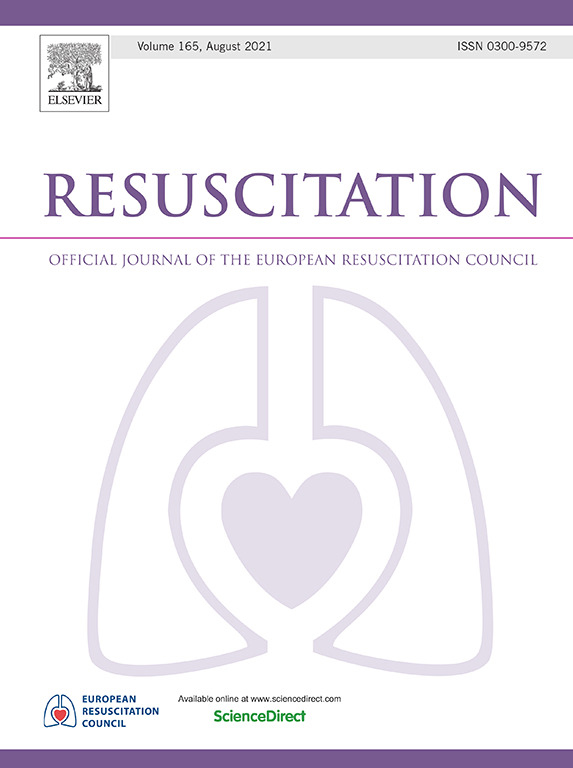Inferior vena cava thrombosis associated with endovascular cooling catheters: impact on clinical outcomes
IF 4.6
1区 医学
Q1 CRITICAL CARE MEDICINE
引用次数: 0
Abstract
Background
Endovascular cooling catheters are used to induce and maintain therapeutic hypothermia. While generally considered safe, complications have been reported, notably catheter-related inferior vena cava (IVC) thrombosis. We sought to determine the frequency and clinical impact of this complication in patients managed with therapeutic hypothermia following out-of-hospital cardiac arrest (OHCA).
Methods
We performed a post hoc analysis of the Effect of Moderate vs Mild Therapeutic Hypothermia on Mortality and Neurologic Outcomes in Comatose Survivors of Out-of-Hospital Cardiac Arrest (CAPITAL-CHILL) trial, which randomized 367 comatose OHCA survivors to mild (34 °C) vs moderate (31 °C) hypothermia using endovascular cooling catheters. Patients were routinely screened for IVC thrombosis using abdominal ultrasonography. Patients with IVC thrombosis were compared with patients without. The primary outcome was death or poor neurological outcome at 180 days.
Results
We excluded 48 patients who died before ultrasonography. Amongst the remaining 319, 21 (6.6 %) developed IVC thrombosis. In patients who developed an IVC thrombosis versus those who did not, there was no difference in the primary outcome (47.6 % vs 38.3 %, P = 0.39). In-hospital bleeding was higher in the IVC thrombosis group, but not statistically significant (33.3 % vs 22.8 %, P = 0.24). Patients with IVC thrombosis were more likely to be discharged from hospital on an anticoagulant (76.9 % vs 22.5 %, P < 0.0001).
Conclusion
Despite intravenous anticoagulation, IVC thrombosis remains a relevant complication of endovascular cooling. Though not associated with death or poor neurological outcomes, it was associated with high in-hospital bleeding rates and anticoagulant use at discharge.
下腔静脉血栓形成与血管内冷却导管:对临床结果的影响
血管内冷却导管用于诱导和维持治疗性低温。虽然一般认为是安全的,但有并发症的报道,特别是导管相关的下腔静脉血栓形成。我们试图确定院外心脏骤停(OHCA)后治疗性低温患者出现这种并发症的频率和临床影响。
本文章由计算机程序翻译,如有差异,请以英文原文为准。
求助全文
约1分钟内获得全文
求助全文
来源期刊

Resuscitation
医学-急救医学
CiteScore
12.00
自引率
18.50%
发文量
556
审稿时长
21 days
期刊介绍:
Resuscitation is a monthly international and interdisciplinary medical journal. The papers published deal with the aetiology, pathophysiology and prevention of cardiac arrest, resuscitation training, clinical resuscitation, and experimental resuscitation research, although papers relating to animal studies will be published only if they are of exceptional interest and related directly to clinical cardiopulmonary resuscitation. Papers relating to trauma are published occasionally but the majority of these concern traumatic cardiac arrest.
 求助内容:
求助内容: 应助结果提醒方式:
应助结果提醒方式:


